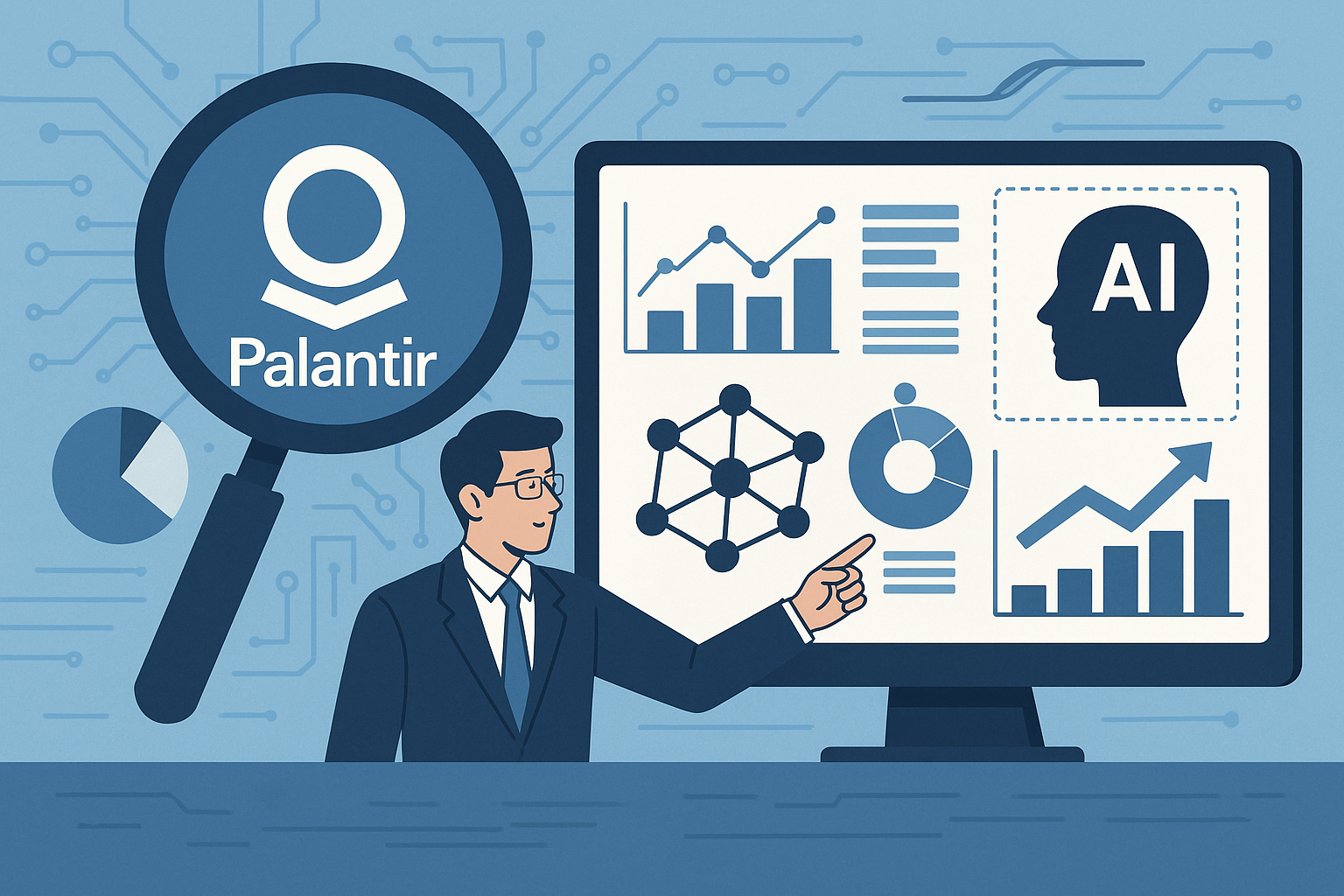
When investors hear the name Palantir, reactions are rarely lukewarm. Some see a secretive, cutting-edge technology powerhouse, while others struggle to pin down exactly what the company does and how it makes money. With a reputation built on government contracts, sophisticated data platforms, and a touch of Silicon Valley mystique, Palantir Technologies (NYSE: PLTR) has become one of the most intriguing and controversial companies in the modern tech landscape. But what exactly does Palantir do, and why does it matter for investors? Let’s break down the company’s business, technology, and future prospects.
The Origins of Palantir
Founded in 2003 by Peter Thiel, Alex Karp, Nathan Gettings, Joe Lonsdale, and Stephen Cohen, Palantir set out with a bold mission: to help organizations make sense of massive, complex datasets in ways that were previously unimaginable. Early on, Palantir’s primary customers were U.S. government agencies, including the intelligence community, law enforcement, and the Department of Defense. The company’s software was credited with helping to identify terrorist networks and disrupt financial crimes—a reputation that gave rise to its shadowy image.
The name “Palantir” itself comes from J.R.R. Tolkien’s Lord of the Rings—magical “seeing stones” that allow users to see across great distances and discern hidden truths. The analogy is apt: Palantir’s platforms are designed to help users visualize and act on data that would otherwise be hidden or too complex to decipher.
Core Products: Gotham and Foundry
At the heart of Palantir’s business are two main software platforms: Gotham and Foundry.
1. Palantir Gotham
Gotham was Palantir’s first major platform and remains the backbone of its government business. It is a powerful data integration and analysis tool built specifically for intelligence, defense, and law enforcement agencies. Gotham allows users to ingest vast amounts of structured and unstructured data from a range of sources—spreadsheets, databases, surveillance feeds, emails, social media, and more.
Gotham’s interface enables users to connect disparate data points, build detailed profiles, map relationships, and run complex queries at scale. Its visualization tools help analysts uncover hidden patterns and make critical decisions—everything from tracking terror networks to identifying fraud in financial systems.
2. Palantir Foundry
Recognizing the value of its technology beyond government, Palantir developed Foundry as a commercial platform tailored for private-sector customers. Foundry helps businesses integrate data from multiple silos—ERP systems, sales databases, supply chains, IoT devices—and turn it into actionable intelligence.
Major corporations in healthcare, manufacturing, energy, finance, and other sectors use Foundry for tasks such as supply chain optimization, risk management, predictive maintenance, and customer analytics. Foundry’s no-code/low-code environment allows non-technical users to build workflows, dashboards, and data models, democratizing advanced analytics across the enterprise.
Palantir’s Business Model
Unlike pure software-as-a-service (SaaS) vendors, Palantir combines software subscriptions with high-touch consulting and customization. This means revenue comes from long-term contracts that often require significant onboarding and integration, but can result in deeply embedded customer relationships.
The company has two main revenue streams:
- Government: This segment continues to account for a large portion of Palantir’s revenue. Customers include U.S. and allied military, intelligence, and law enforcement agencies.
- Commercial: This side of the business is growing, with major clients in energy, healthcare, automotive, and financial services.
Palantir’s contracts are typically multi-year, with significant upfront investment from both the company and the client. This approach leads to high gross margins but can also mean lumpy, unpredictable growth quarter-to-quarter.
How Does Palantir’s Technology Work?
Palantir’s value proposition lies in its ability to turn vast, messy datasets into clear, actionable insights—often in environments where data privacy, security, and accuracy are paramount.
- Data Integration: Palantir ingests data from virtually any source, cleans it, and organizes it into a unified ontology (a structured map of data concepts and relationships).
- Analysis and Modeling: Users can run statistical analyses, build predictive models, and perform “what-if” scenario planning—all with the security and controls required by sensitive organizations.
- Visualization: Powerful dashboards, interactive graphs, and geospatial mapping help users quickly see patterns and relationships that would otherwise go unnoticed.
- Collaboration: Both Gotham and Foundry allow multiple users to collaborate securely, with robust permissions and audit trails.
Palantir invests heavily in privacy, access control, and encryption to satisfy the stringent demands of its government and enterprise clients.
Key Partnerships and Use Cases
Palantir’s technology is used in a broad range of scenarios:
- Counterterrorism and Intelligence: Tracking and mapping terror cells, uncovering networks, identifying funding sources.
- Healthcare: Analyzing patient outcomes, tracking disease outbreaks, optimizing supply chains for PPE and vaccines.
- Manufacturing: Predicting equipment failures, optimizing logistics, monitoring global supply chains.
- Finance: Detecting fraud, managing risk, regulatory compliance.
During the COVID-19 pandemic, Palantir played a visible role in helping governments and health systems manage resource allocation, track infections, and distribute vaccines.
The Investment Case: Opportunities and Risks
For investors, Palantir represents both promise and uncertainty.
Opportunities:
- Expanding Commercial Business: Palantir’s push into the private sector opens up huge addressable markets and reduces reliance on government contracts.
- Sticky Customer Relationships: The complexity of integration makes it hard for customers to switch, leading to high retention and long-term contracts.
- AI and Data Boom: As organizations worldwide race to harness the power of data and AI, Palantir’s tools are increasingly in demand.
Risks:
- High Costs and Scalability: Palantir’s model relies on custom integration and consulting, which can hinder rapid scaling and compress margins.
- Controversial Clients and Ethics: Some investors are wary of Palantir’s work with government agencies, raising ethical and reputational questions.
- Competitive Pressure: The big cloud players—Amazon, Microsoft, Google—as well as niche analytics startups, all compete for similar business.
The Bottom Line
Palantir is not just another enterprise software company—it’s a builder of powerful data platforms that shape how organizations make critical decisions. For investors, understanding Palantir means looking beyond the headlines and grappling with the complexity of both its technology and its business model.
As the world becomes more data-driven and organizations seek ever more sophisticated analytics tools, Palantir’s role—and potential—will only grow. But with that growth comes heightened scrutiny, execution risks, and the challenge of balancing public sector and commercial opportunities. For those willing to dive deep into the story, Palantir (NYSE: PLTR) offers both the intrigue of a Silicon Valley legend and the potential for significant rewards.
Disclaimer: This article is for informational purposes only and does not constitute investment advice. Investors should conduct their own research and consult with a qualified financial advisor before making investment decisions.





